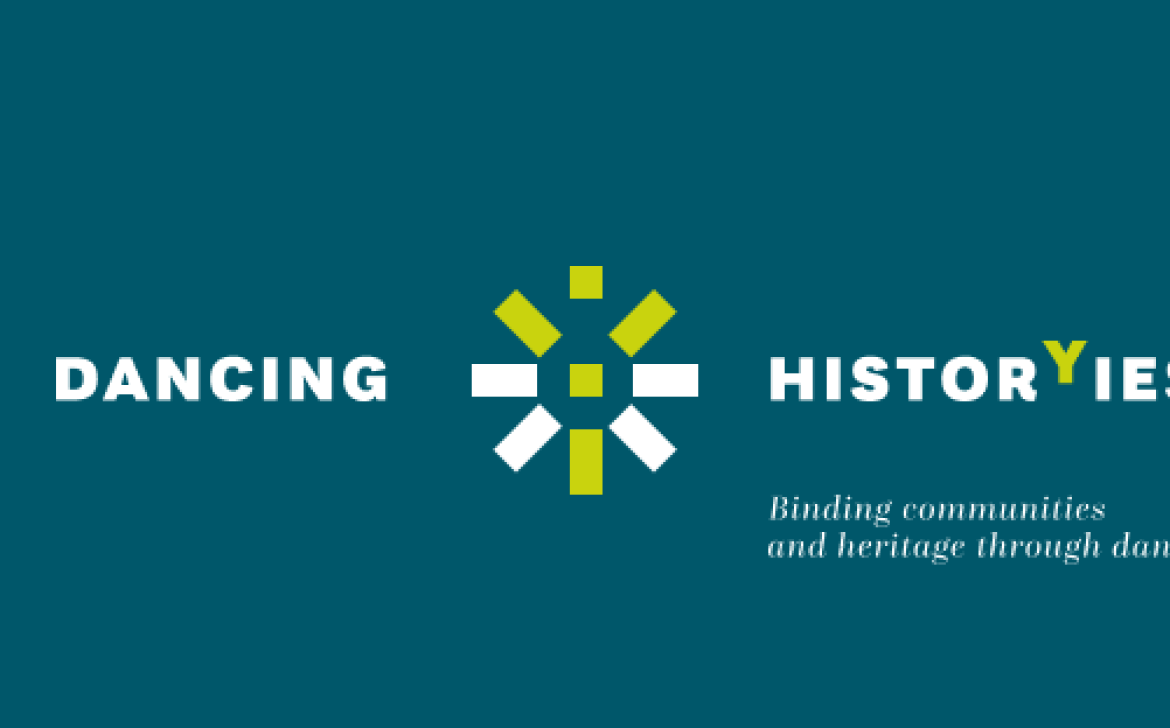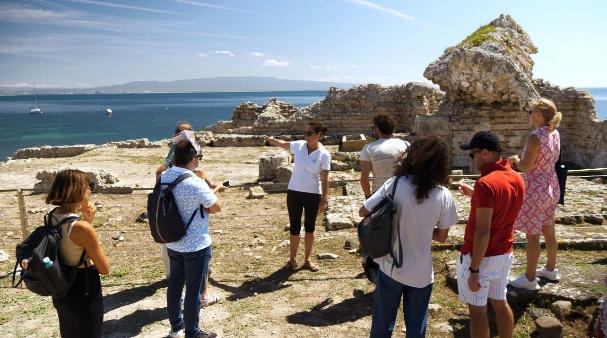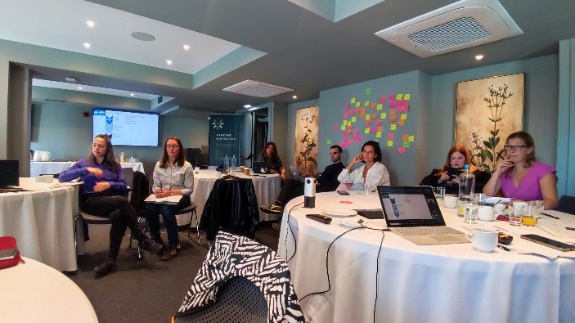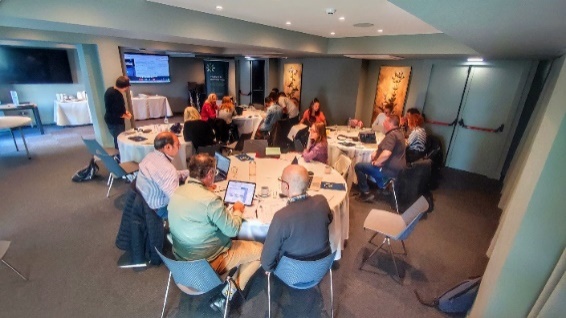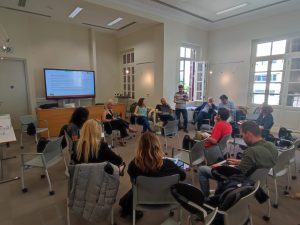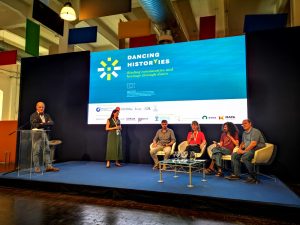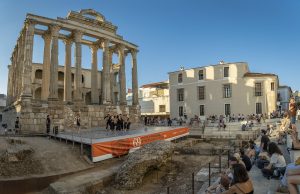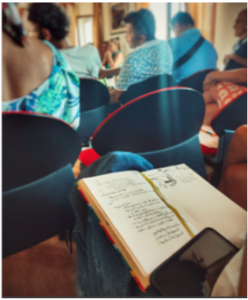3rd Newsletter of Dancing Histor(y)ies
One year ago, our fantastic project began.
These have been intense months, full of activities, studies, researches and meetings that involved 13 partners from 11 different countries!
After a year of hard work, our project is taking shape through the involvement of local communities and the enhancement of cultural heritage through dance.
Relive our first year through our social channels.
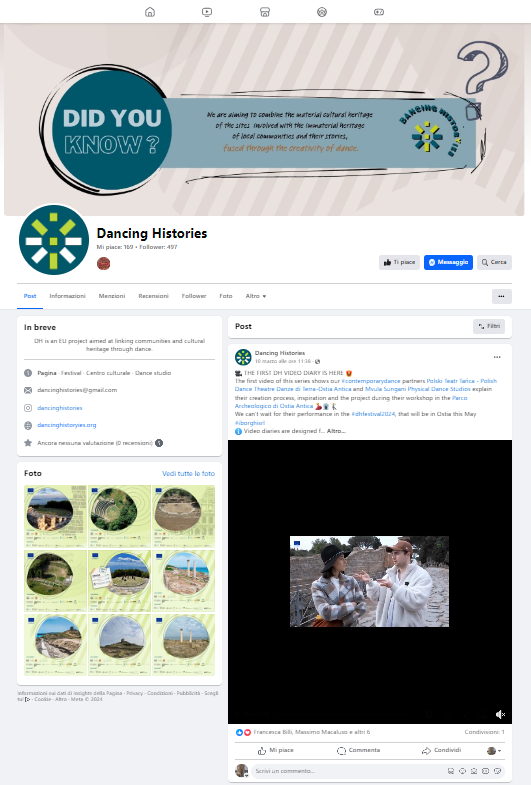
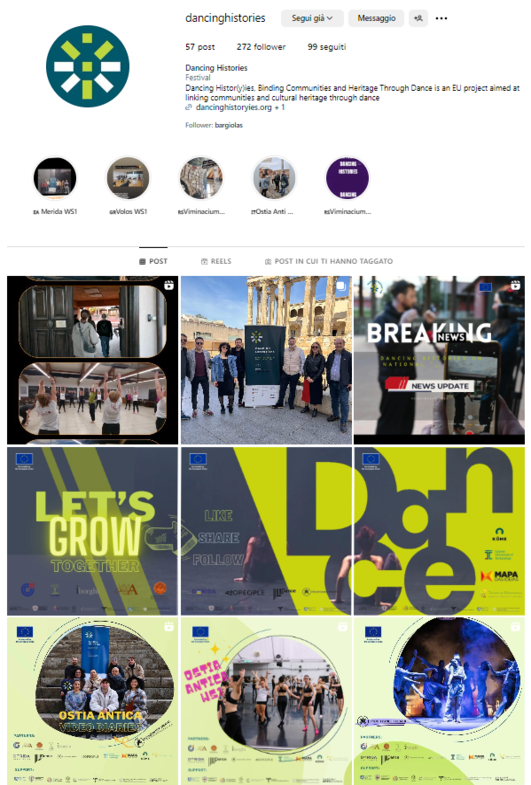
WHERE ARE WE AT?
DH model is finally ready!
The “Model of Valorisation of archaeological sites through dance and performing arts” is founded on the principles of collaboration, community engagement, and an unwavering respect for historical sites.
By incorporating best practices, experience and collective knowledge, it seeks to ensure the protection, celebration, and continuity of our cultural heritage for generations to come.
It is a blueprint for creating festivals that resonate with their communities and enrich the legacy of our shared history.
Our technical partners worked very hard with other partners, stakeholders and communities and collected more than 200 questionnaires from 11 countries and 60 good practices on relationships between citizens and cultural activities, local needs, enhancement of cultural heritage, community engagement.
As a result, it was concluded that an efficient model for the valorisation of heritage sites through performing arts, community engagement and territorial development should consist of 10 components:
Main Activities:
- Discover (and respect) the Site
- (Find the) Facilitator
- Artistic Production
- Local Engagement
- Territorial Development
- Communication Channels
Transversal Activities:
- Gender Equality
- Accessibility
- Environmental Sustainability
- Social Inclusion
- + Continuity (Keep it alive)
At the end of the project, the good practices detected, the methodology designed, and the results achieved, will become a shared and common knowledge available for further use and implementation at European level.
It’s time to test our implementation strategies!
Institutional Partners managing the heritage sites and stakeholders have been involved in a co-design process, adapting the model to the local needs.
They have worked together for over a month to introduce the model to the territories and involve local communities through 52 meetings amongst stakeholders which produced 22 framework agreements.
For each selected heritage site, Institutional and Technical Partners have worked to create an accurate plan regarding artistic production, community engagement, territorial marketing and development.
The implementation strategy will be tested during Workshops and the DH festivals.
Let’s dance!
Dance Companies have started their first workshops within the communities hosting the cultural sites.
They have been in Viminacium (SB), Ostia (IT), Merida (ES) and Volos (GR), and will be in Tharros (IT) in the next weeks (from 6th to 10th April).
In the next months they will do the second and third workshops and the final residency and finally… the first edition of DH Festivals!
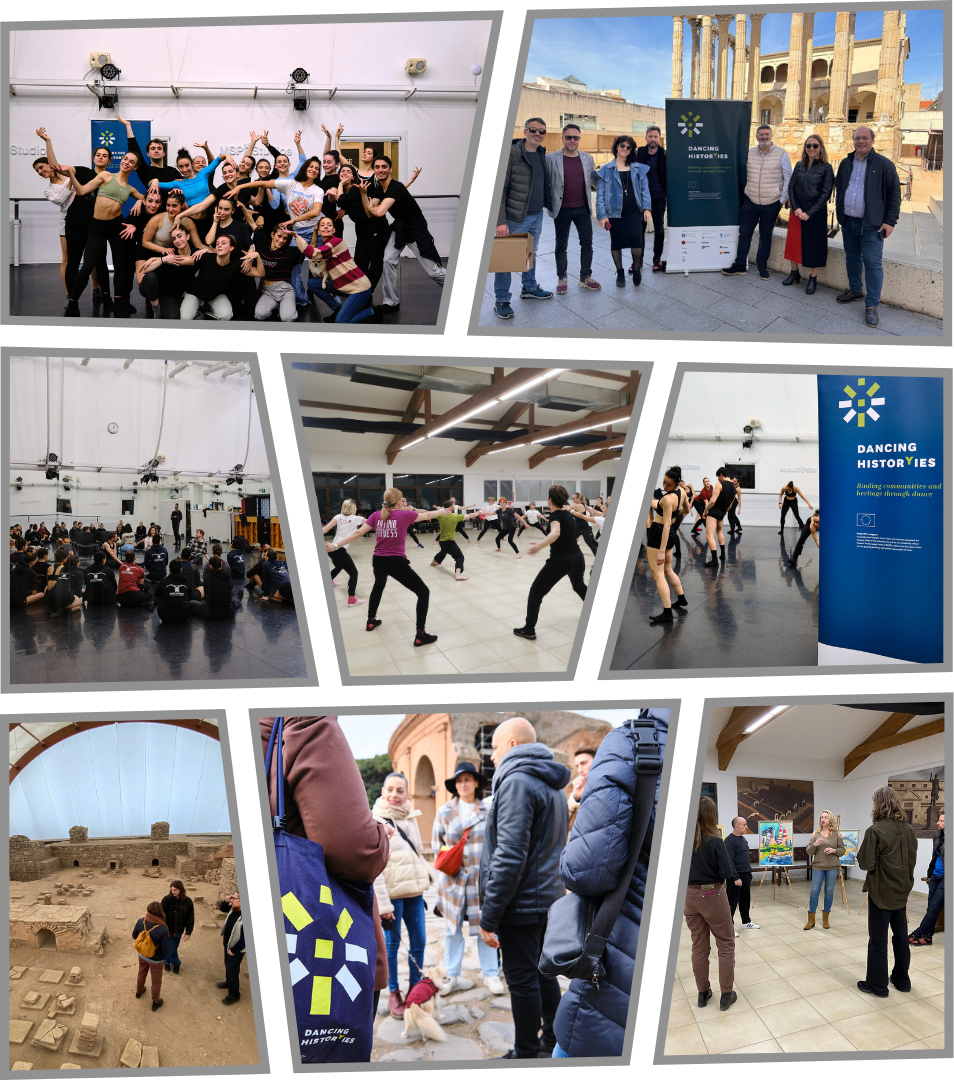
Keep following all the steps of the project, we are ready to dance and create new bonds with local communities!

The European Commission’s support for the production of this publication does not constitute an endorsement of the contents, which reflect the views only of the authors, and the Commission cannot be held responsible for any use which may be made of the information contained therein.
DATA MANAGEMENT
In compliance with Regulation (EU) 2016/679 of the European Parliament and of the Council of 27 April 2016 we hereby inform you that your personal data are part of a specific database for the collection and management of personal data within the project Dancing Histor(y)ies (from here onwards referred to as the “Project”) whose Joint Data Controller is Associazione Enti locali per le attività culturali e di spettacolo, with headquarters in Via Pasquale Paoli n.25 – 09128 Cagliari, VAT number: 01859050922 together with the other Joint Data Controllers defined by the GDPR agreement signed within the Dancing Histor(y)ies consortium.
The Joint Data Controllers may process the personal data collected for the period necessary to fulfil the obligations established in the Partnership agreement concluded between the Joint Data Controllers and other project partners and/or in the Grant agreement concluded between the Joint Data Controllers and other project partners and the European Commission.
Interested parties can contact the Data Protection Officer (DPO) by sending an email to: dancinghistoriesdpo@gmail.com to have a complete view of the GDPR or to exercise each of the following rights: access to their personal data; obtain a copy of the personal data; correct personal data; delete your data; limit processing; request data portability; exercise the right of objection; file a complaint.

